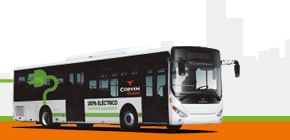In Europe, and especially in Spain, there is a known lack of charging points. There are only 225,000 in the whole of the old continent.
Spain only has just over 13,400 points while 75% of the share is taken up by Nordic or central European countries. There is an imbalance.
But Huawei Digital Power sees it as «a great opportunity for development». This is how its Business Director E-Mobility, Ignacio Díaz, puts it in the interview series «Personalities» of Grupo Portal Movilidad.
«There is still a lot of work to be done in Europe and, more specifically, in Spain», he says.
The country is still a long way from the infrastructures of Finland, Denmark or Germany. It is more similar to France, Austria or Italy.
For Huawei, the mission is to turn Spain «into a benchmark country», Diaz adds that this is something «they have already done in other sectors».
Since 2014 there has been sustained growth throughout Europe, which is long, but still falls short of the challenges proposed by the authorities towards 2030.
This is where the Business Director E-Mobility points out that «more than specific deadlines we should talk about intentions, the electric car market is strategic because we can see that the number of charging points will continue to grow exponentially».
In this context, it is expected that public charging will have seven million ultra-fast chargers and another 30 million for private charging (whether at home or at work).
This is where the European Charge Master Plan explains, in a nutshell, that 14,000 public charging points per week are needed to reach these targets.
At present, there are only 25,000 fast charging points across Europe.
Ignacio Diaz points not only to the lack of chargers but also to their maintenance. «The operation of the points is something that is totally underestimated,» he says.
«If you go to an app, it is surprising how many charging points do not work, and not only that, the problem is not visualised in the app», he says.
On this he adds that «there are many pending issues» and lists that one is to install and the other is to do it correctly and follow up with maintenance.
Problems in aid segmentation
Diaz referred specifically to the Moves III Plan, which has 400 million euros to subsidise both the purchase of electric cars and charging infrastructure.
«It covers the whole context and has a very significant budget, a considerable increase compared to previous plans», he explained.
Moves is a facilitator for the installation of charging points, which is one of the most important fear factors when it comes to buying an electric vehicle.
«Although the path is very good, it would be good to look at how other countries are doing it, especially in a European context,» he says, adding that a model similar to the German one should be followed.
This is divided by segments and by approaches to aid schemes.
There are different state or regional programmes that focus on the electric car, another on the charger, the charger for companies, and different programmes for the purchase of fast chargers, where the copex impact is important.
«These are ideas that we should be able to evaluate when it comes to seeing the success of the Moves III plan, we have seen that this segmentation of the programmes facilitates the implementation and execution of the subsidies», said Diaz.
Huawei’s plans
The Chinese company’s focus is on fast and continuous charging points in DC. This is what you usually see at petrol stations.
«Our products, like all Huawei products, are characterised by being top in efficiency and innovation in their category,» says the Business Director.
Huawei has a specific area for the development of these technologies called Digital Power, where it addresses, among other topics, electric mobility.
«Our developments are focused on developing the technology we have in other areas of energy, IST or telecommunications, to apply it to the electric vehicle charging environment,» explains Diaz.
Specifically, he is referring to the 20, 23.5 kW AC/DC converters. «It can be summed up as providing the heart of the fast charger that we have at electric charging stations,» he says.
The trend that Huawei is following is to integrate the vehicle as a dynamic player in the electricity grid. One that, in Díaz’s opinion, «is going to be increasingly volatile».
It will be one with «a certain unpredictability», which is why the grid is becoming more dynamic and the electric vehicle can serve as a counterpoint to this phenomenon.





















